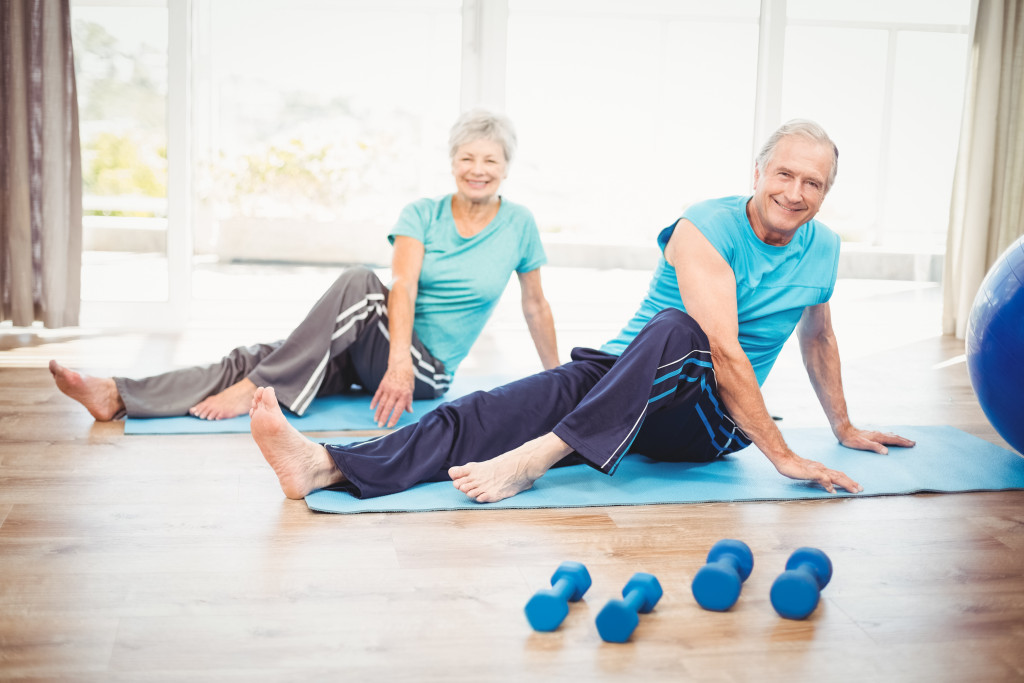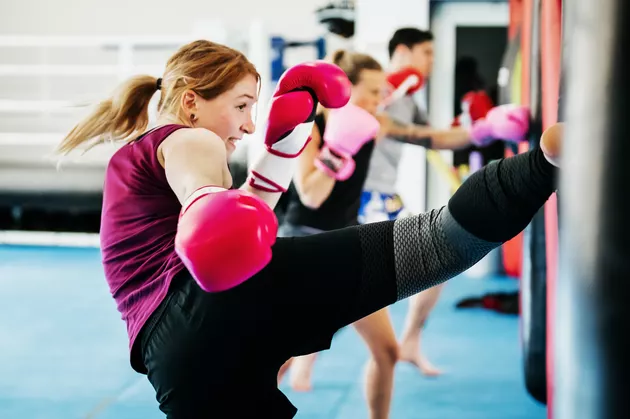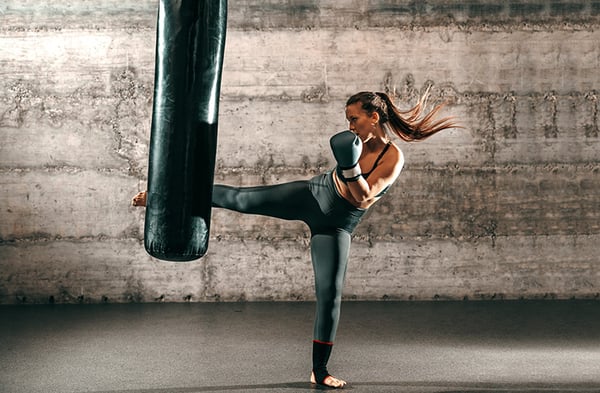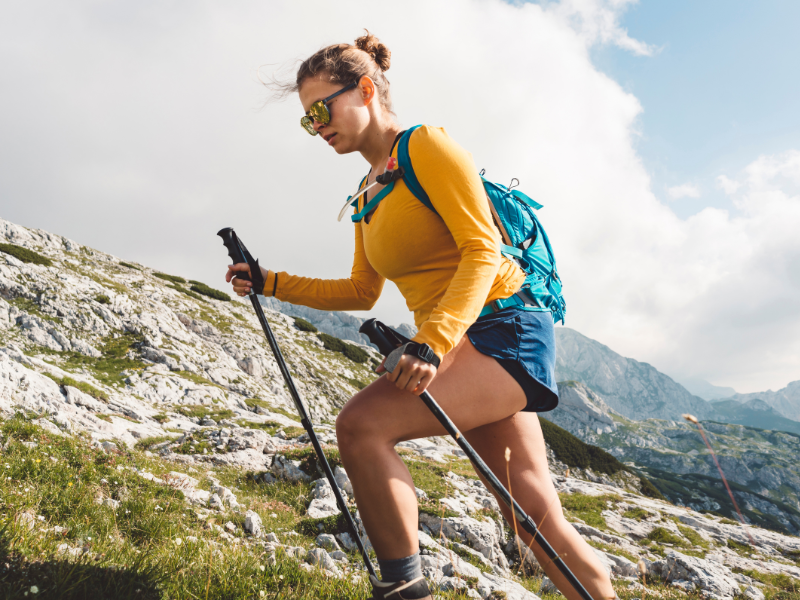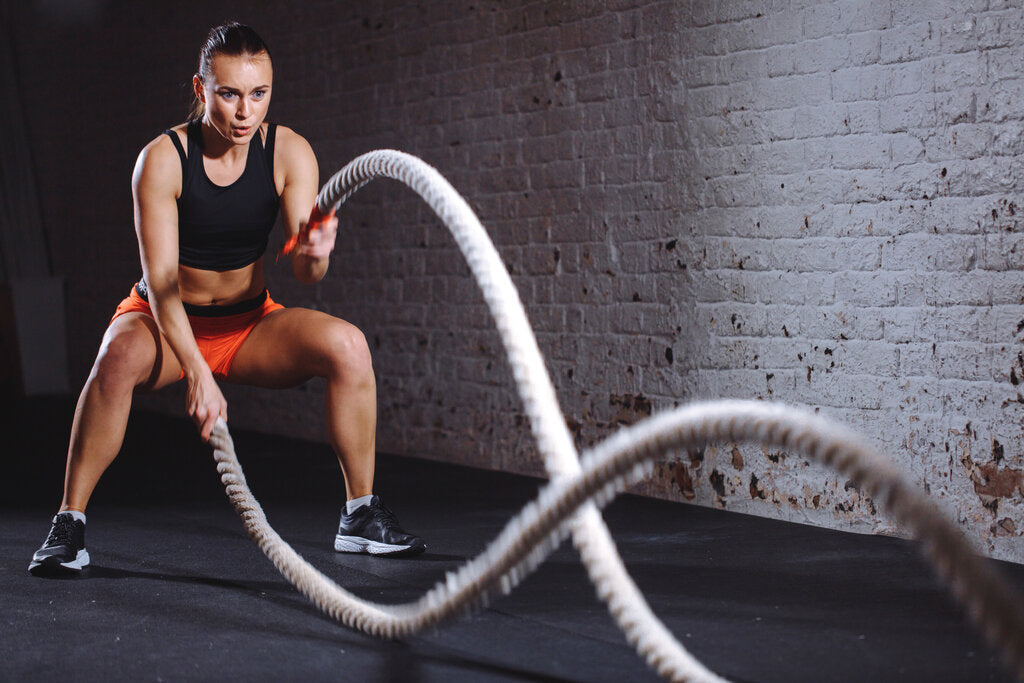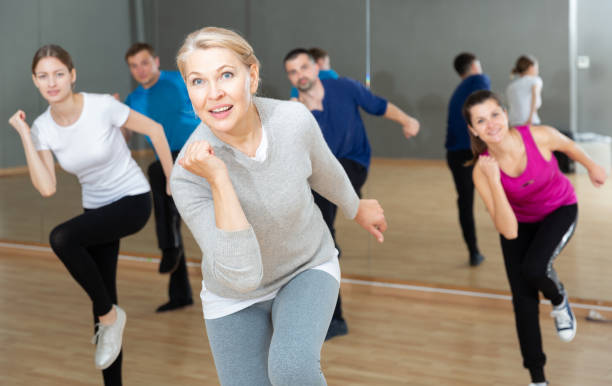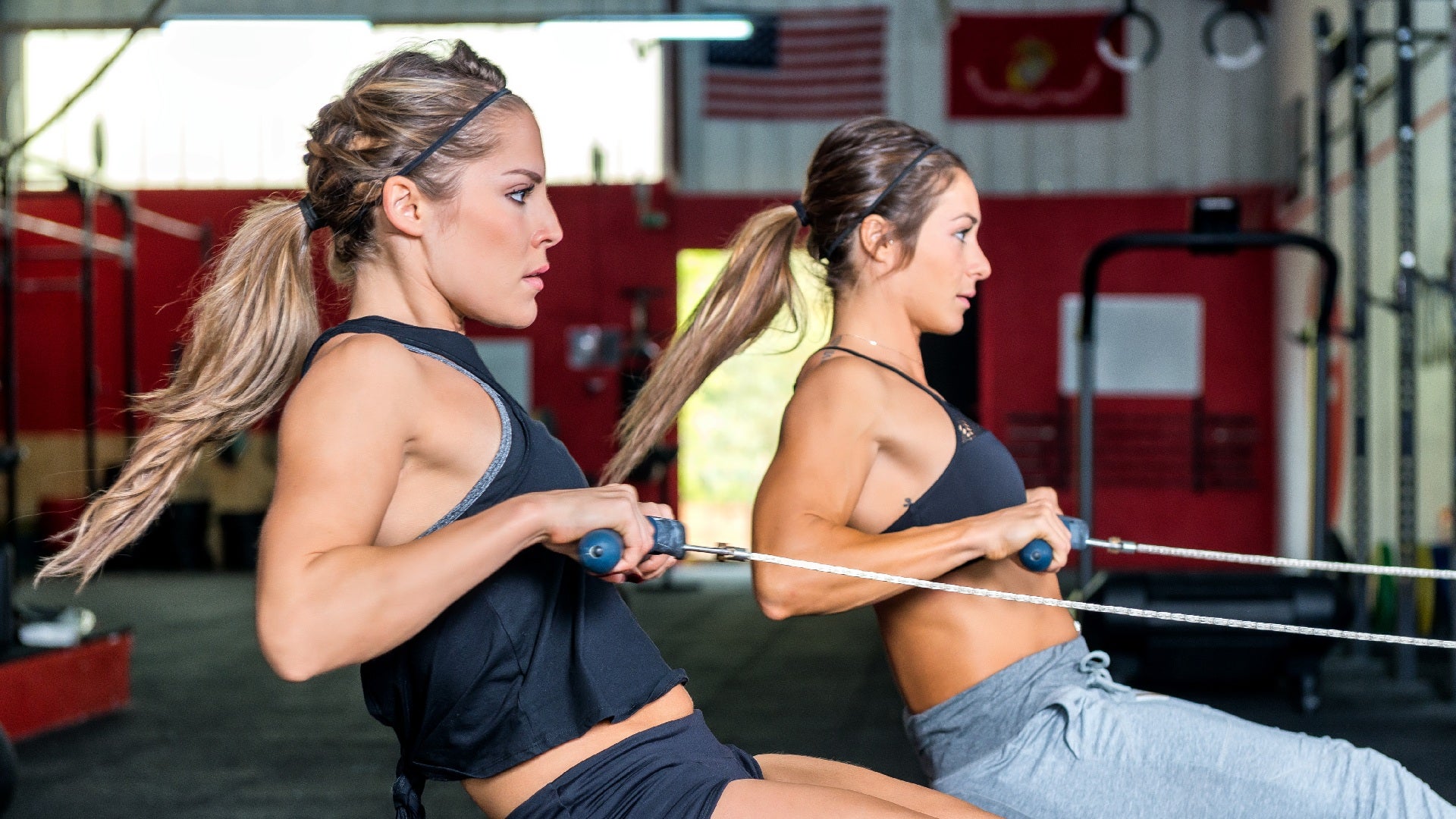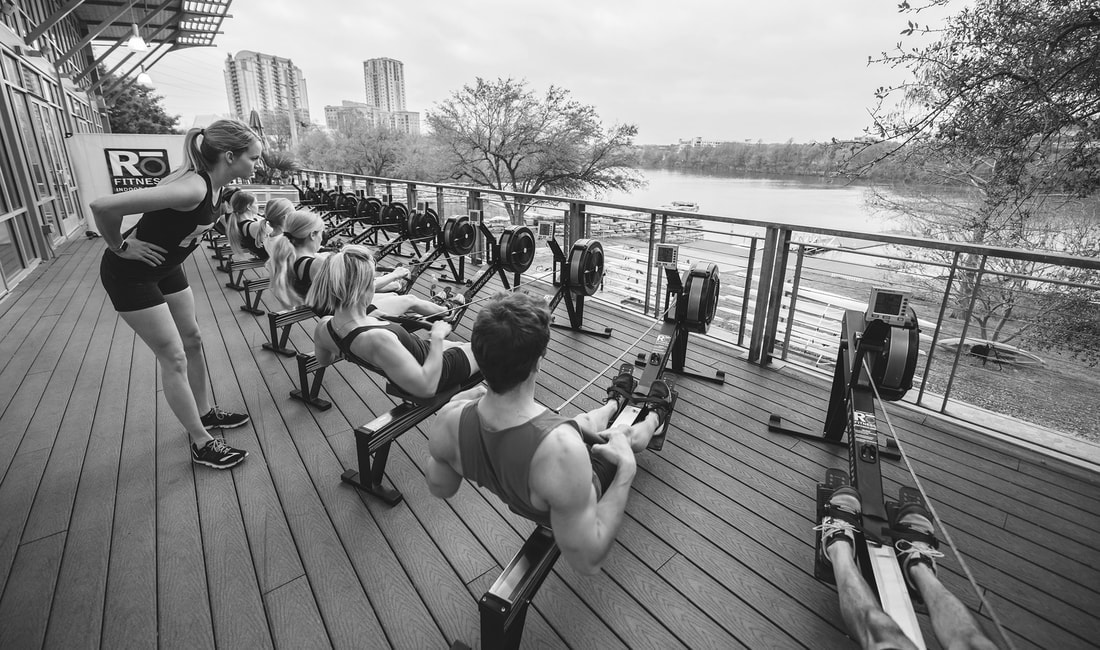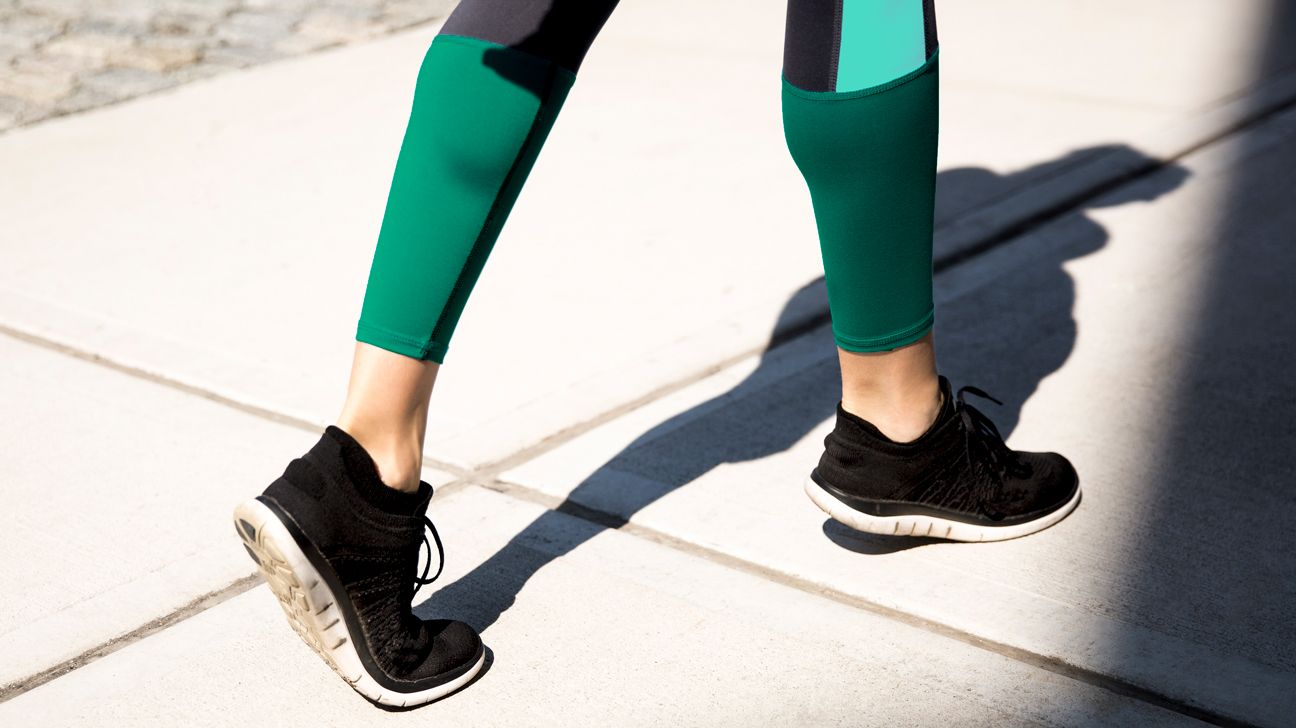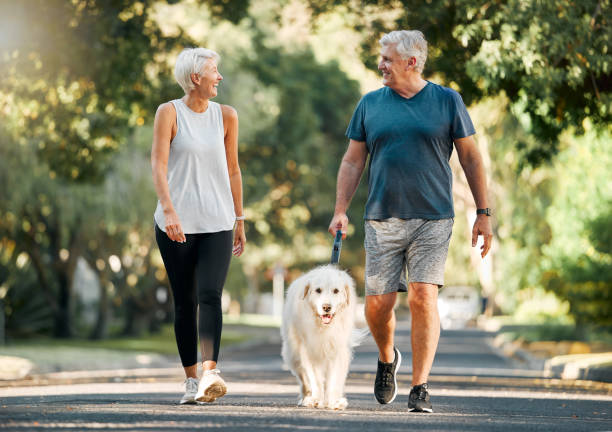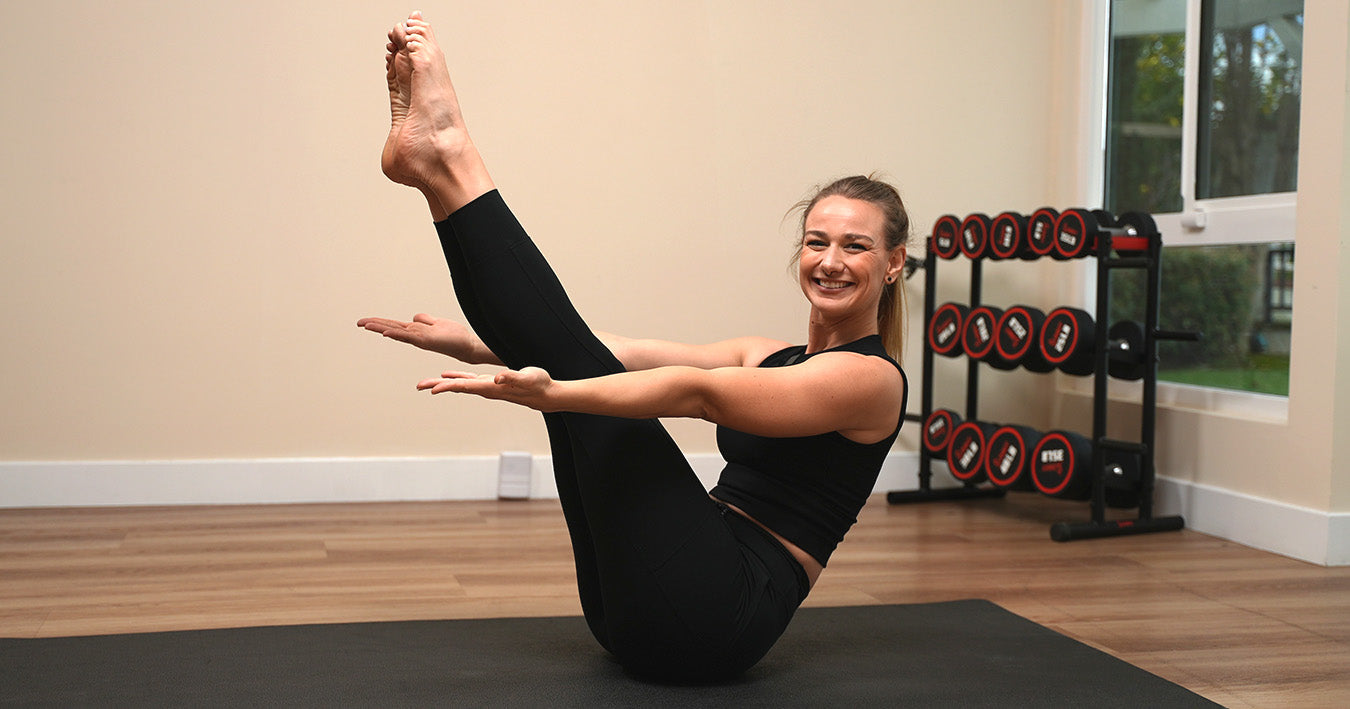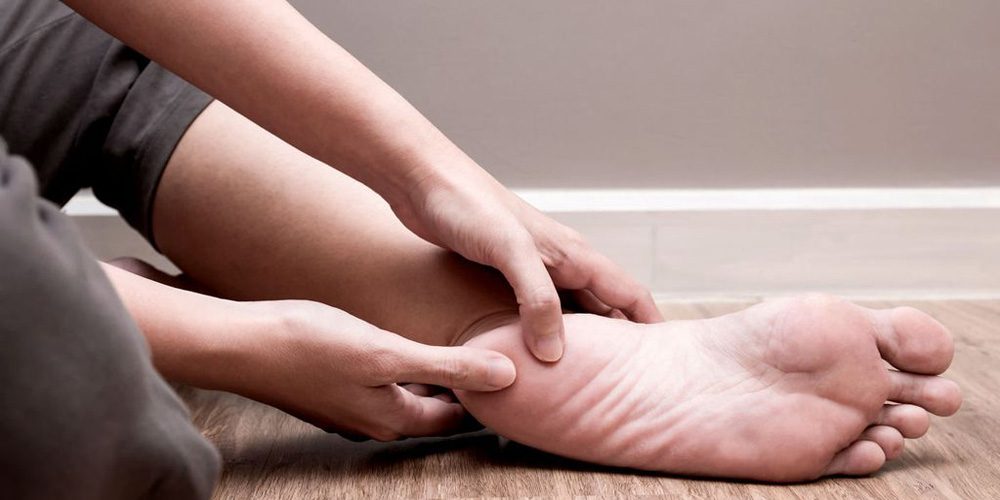Sunday, November 3, 2024
"Cardiovascular (Aerobic) Exercise:Team Sport"
Water Polo:
"Cardiovascular (Aerobic) Exercise:Kickboxing and Martial Arts"
"Cardiovascular (Aerobic) Exercise:Kickboxing and Martial Arts"
Advantages of Kickboxing and Hand to hand fighting for Cardiovascular Wellbeing
1. Worked on Cardiovascular Wellbeing
Kickboxing and hand to hand fighting are serious vigorous exercises that include ceaseless development, expanding pulse and upgrading cardiovascular wellness. High-energy kicks, punches, and quick body developments further develop dissemination, reinforce the heart, and lift lung limit. Ordinary combative techniques preparing can bring down pulse, diminish the gamble of coronary illness, and advance generally speaking heart wellbeing.
2. Full-Body Exercise and Muscle Conditioning
Combative techniques and kickboxing connect essentially every muscle bunch in the body. Kicks fortify the legs, center developments foster abs, and punches connect with the chest area, making a balanced, full-body exercise. The dangerous, focused energy moves construct fit muscle, further develop muscle tone, and assist with fostering a reasonable, strong constitution.
3. Unhealthy Consume and Weight reduction
Hand to hand fighting and kickboxing are exceptionally compelling for calorie consume and fat misfortune. A one-hour kickboxing meeting can wreck to 600-800 calories, contingent upon the force and kind of preparing. As an extreme cardio exercise (HIIT) movement, kickboxing helps increment metabolic rate, which keeps on consuming calories even after the exercise.
4. Improved Readiness, Equilibrium, and Coordination
Kicking, punching, evading, and turning require exact coordination and equilibrium. Rehearsing these methods creates spryness, body control, and coordination, which can work on by and large physicality and coordinated movements. Combative techniques preparing refines reflexes and body mindfulness, making day to day developments and different games exercises more effective and adjusted.
5. Expanded Adaptability and Scope of Movement
The unique developments in combative techniques, like high kicks and profound positions, further develop adaptability in the hips, legs, and shoulders. Ordinary extending, a fundamental piece of hand to hand fighting, expands scope of movement and forestalls muscle snugness. Upgraded adaptability lessens the gamble of wounds, further develops pose, and considers a more noteworthy assortment of developments.
6. Emotional wellness Advantages and Stress Alleviation
Kickboxing and hand to hand fighting preparation offer huge emotional well-being benefits, including pressure decrease and worked on mental lucidity. Active work discharges endorphins, which lift mind-set and lessen pressure. The center expected in combative techniques advances care, assisting experts with overseeing tension and remain grounded. Moreover, the actual outlet of striking or hooking can be soothing, offering a sound method for delivering pressure.
7. Discipline, Certainty, and Confidence
Hand to hand fighting ingrains discipline, as every procedure requires centered practice, persistence, and determination. The movement through belt positions or expertise levels supports confidence and certainty, and accomplishing objectives constructs a feeling of achievement. Hand to hand fighting preparation shows strength, objective setting, and self-control, which are appropriate to all everyday issues.
Kinds of Kickboxing and Combative techniques Exercises
Muay Thai (Thai Kickboxing):
Muay Thai, or Thai kickboxing, is known as the "specialty of eight appendages" since it consolidates hits with clench hands, elbows, knees, and shins. This full-physical game forms power, perseverance, and deftness, with drills, for example, cushion work, informal sparring, and weighty pack preparing, making it a fantastic cardiovascular exercise.
Boxing:
Boxing includes strong punches, quick footwork, and head development. It gives an extraordinary cardio exercise while developing chest area fortitude, perseverance, and coordination. Boxing exercises frequently incorporate drills like leap rope, glove work, and sack preparing to foster method and endurance.
Karate:
Karate is a Japanese military workmanship that spotlights on strikes, blocks, and guarded moves. It consolidates a progression of katas (structures) and fighting drills that work on cardiovascular wellness, discipline, and mental concentration. Karate improves adaptability and shows exact, controlled developments.
Taekwondo:
Taekwondo, a Korean military craftsmanship, underlines high kicks, quick footwork, and turning procedures. It's profoundly high-impact and further develops adaptability, equilibrium, and leg strength. Taekwondo bores frequently include dull kicking successions, nimbleness activities, and competing, making it powerful for cardiovascular molding.
Brazilian Jiu-Jitsu (BJJ):
Brazilian Jiu-Jitsu is a hooking put together military workmanship that concentrations with respect to ground battling, entries, and influence. While it may not include extreme focus striking, BJJ requires huge cardiovascular perseverance and strength, especially during competing meetings, where professionals continually move and protect.
Kickboxing (American or Cardio Kickboxing):
Kickboxing consolidates components of boxing and conventional combative techniques. Cardio kickboxing, specifically, underlines high-energy, non-contact strategies and is a famous type of gathering exercise. It centers around further developing endurance, muscle tone, and cardiovascular wellbeing.
Blended Hand to hand fighting (MMA):
MMA consolidates different disciplines, including kickboxing, Brazilian Jiu-Jitsu, wrestling, and Muay Thai, making it a complete exercise that challenges the body and brain. MMA preparing includes striking, hooking, and molding drills, making it requesting yet compensating for cardiovascular wellbeing.
Strategies for Powerful Kickboxing and Combative techniques Preparing
Ace the Rudiments First:
Prior to progressing to complex strategies, center around dominating fundamental developments like pokes, crosses, and kicks. Legitimate structure is fundamental to stay away from injury and increment the adequacy of each move. Rehearsing the nuts and bolts establishes areas of strength for a point for further developed procedures.
Integrate Stretch Preparation:
Hand to hand fighting preparation frequently incorporates stretch style exercises, switching back and forth between extreme focus striking drills and short recuperation periods. This stretch arrangement lifts the pulse, consumes calories, and further develops perseverance. For instance, a meeting could include three-minute rounds of punching mixes followed by a moment of rest.
Practice Footwork and Development:
Footwork is basic in hand to hand fighting and kickboxing, as it permits professionals to keep up with equilibrium, distance, and control. Rehearsing mixes, turns, and steps further develops dexterity and coordination, making methods more successful and liquid.
Draw in the Center:
The center assumes an imperative part in hand to hand fighting, as it settles the body and creates power for kicks and punches. Draw in the center muscles while striking or performing cautious moves to further develop strength, control, and perseverance.
Utilize Controlled Relaxing:
Legitimate breathing keeps up with energy and control, especially during extreme focus drills. Breathe in profoundly before effort and breathe out pointedly with each punch or kick to further develop center and forestall exhaustion. Controlled breathing is fundamental for keeping up with endurance during fighting or extraordinary preparation.
Consolidate Competing and Pack Work:
Competing with an accomplice reproduces genuine battle situations, further developing timing, reflexes, and versatility. Pack work, similar to weighty sack preparing, considers full-power strikes and assembles perseverance, strength, and power. These preparation strategies add authenticity and challenge to combative techniques practice.
Injury Avoidance Tips for Kickboxing and Hand to hand fighting
Warm-Up and Extending:
Start every meeting with a get ready to plan muscles and joints. Light cardio, dynamic stretches, and informal sparring are viable for heating up, particularly focusing on the hips, shoulders, and wrists, which are vigorously utilized in combative techniques.
Utilize Appropriate Stuff:
Defensive stuff like gloves, shin protectors, and mouthguards is fundamental to forestall injury, particularly during fighting. Gloves safeguard the hands and wrists, while shin protectors pad influence on the legs. Quality, well-fitting stuff diminishes the gamble of injury.
Center around Procedure, Not Simply Power:
Unfortunate strategy can prompt injury, especially in high-influence sports like kickboxing. Center around structure and control prior to adding capacity to strikes. Appropriate method lessens stress on joints and muscles, forestalling wounds.
Limit High-Effect Preparing:
High-influence strikes, for example, kicks and punches, put weight on the body. To keep away from abuse wounds, offset high-influence preparing with low-influence drills, for example, informal sparring or strategy drills, to forestall weakness and strain.
Permit Time for Recuperation:
Rest days are pivotal for recuperation and injury counteraction. Hand to hand fighting preparation is requesting on the muscles and joints, so getting some much needed rest takes into consideration muscle fix and forestalls burnout. Consolidating low-force exercises, for example, yoga or extending, on rest days keeps up with adaptability.
Methods for Beginning with Kickboxing and Combative techniques
Begin with a Class or Teacher:
Fledglings benefit extraordinarily from direction, so begin with a class or a certified educator who can show legitimate strategy and security. Numerous exercise centers offer fledgling well disposed combative techniques classes or kickboxing programs that present nuts and bolts in a steady climate.
Put forth Unambiguous Objectives:
Figure out what you need to accomplish through hand to hand fighting preparation, whether it's further developing wellness, learning self-protection, or acquiring certainty. Clear objectives give inspiration and bearing, assisting you with zeroing in on progress and improvement.
Cardiovascular (Aerobic) Exercise:Hiking
Cardiovascular (Aerobic) Exercise:Hiking
Advantages of Climbing for Cardiovascular Wellbeing;
1. Worked on Cardiovascular Wellness
2. Full-Body Exercise
3. Calorie Consume and Weight The board
4. Improved Equilibrium, Coordination, and Spryness
5. Psychological well-being Advantages and Stress Decrease
6. Worked on Bone Thickness and Joint Wellbeing
7. Expanded Imagination and Mental Capability
Kinds of Climbing Encounters
Day Climbing:
Hiking:
Mountain Climbing:
Traveling:
Trail Running:
Metropolitan Climbing:
Methods for Viable Climbing Exercises
Take on a steady speed for Perseverance:
Use Climbing Shafts:
Draw in the Center and Keep up with Great Stance:
Center around Relaxing:
Integrate Stretches:
Streamline Step Examples for Uphill and Downhill:
Injury Avoidance Ways to climb
Warm-Up and Extending:
Wear Suitable Footwear:
Hydrate and Fuel Appropriately:
Pay attention to Your Body:
Plan for the Landscape and Climate:
Pack a Medical aid Unit:
Ways to capitalize on Your Climbing Schedule
Put forth Climbing Objectives:
Plan Tourist detours:
Keep tabs on Your Development:
Climb with a Gathering or Accomplice:
Cardiovascular (Aerobic) Exercise:Jumping Rope
Cardiovascular (Aerobic) Exercise:Jumping Rope
Sorts of Hop Rope Activities
Essential Leap:
Substitute Foot Bounce:
Twofold Under:
High Knees:
Fighter Step:
Befuddle Hop:
Side Swing:
Advantages of Bounce Rope for Cardiovascular Wellbeing
1. Worked on Cardiovascular Wellbeing
2. Fatty Consume and Weight reduction
3. Full-Body Exercise and Muscle Conditioning
4. Upgraded Coordination, Equilibrium, and Spryness
5. Expanded Bone Thickness
6. Psychological wellness and Stress Alleviation
7. Comfort and Cost-Viability
Work out with Rope Methods for Successful Exercises
Picking the Right Rope Length:
Dominating the Essential Leap:
Legitimate Grasp and Wrist Development:
Breathing Control:
Pacing and Power Variety:
Utilizing Spans and Blends:
Injury Counteraction for Bounce Rope Activities
Warm-Up and Extending:
Wear Steady Footwear:
Utilize Appropriate Hopping Surface:
Limit Meeting Length and Recurrence:
Center around Structure and Procedure:
Ways to expand Hop Rope Exercises
Put forth Clear Objectives:
Keep tabs on Your Development:
Integrate Bounce Rope into a More extensive Exercise:
Remain Reliable and Patient:
Explore different avenues regarding Various Procedures:
Cardiovascular (Aerobic) Exercise:Dancing
Cardiovascular (Aerobic) Exercise:Dancing
Sorts of Dance Exercises for Cardiovascular Wellbeing
Zumba:
Hip-Bounce Dance:
Artful dance:
Dance-exercise:
Salsa and Latin Dance:
Dance Heart stimulating exercise:
Free-form Dance:
Advantages of Moving as a Cardiovascular Activity
1. Worked on Cardiovascular Wellbeing
2. Calorie Consume and Weight The board
3. Full-Body Exercise and Muscle Conditioning
4. Upgraded Coordination, Equilibrium, and Dexterity
5. Adaptability and Scope of Movement
6. Psychological wellness and Stress Decrease
7. Social Collaboration and Local area
8. Mental Advantages and Cerebrum Wellbeing
Dance Procedures for Successful Exercises
Warm-Up and Extending:
Dominating the Rudiments:
Keeping up with Great Stance:
Controlled Relaxing:
Reliable Practice:
Involving the Center for Soundness:
Picking the Right Footwear:
Normal Dance-Related Wounds and How to Stay away from Them
Lower leg Injuries:
Knee Agony:
Lower Back Agony:
Shin Braces:
Ways to benefit from Your Dance Exercise
Put forth Private Objectives:
Consolidate Different Dance Styles:
Remain Hydrated and Fuel Up:
Cardiovascular (Aerobic) Exercise:Rowing
Cardiovascular (Aerobic) Exercise:Rowing
Sorts of Paddling Exercises for Cardiovascular Wellness;
Indoor Paddling:
Water Paddling:
Paddling Classes:
Stretch Paddling:
Consistent State Paddling:
Power Paddling:
Advantages of Paddling as a Cardiovascular Activity;
1. Thorough Cardiovascular Wellbeing
2. Full-Body Exercise and Muscle Conditioning
3. Weight reduction and Caloric Consume
4. Low-Effect and Joint-Accommodating
5. Upgraded Stance and Center Strength
6. Psychological well-being Advantages
7. Further developed Lung Limit and Respiratory Wellbeing
8. Social and Local area Advantages
Paddling Procedures for Viable Exercises
Legitimate Structure and Stance:
Periods of the Paddling Stroke:
Drawing in the Center:
Breathing Control:
Changing Opposition and Power:
Lower Back Strain:
Wrist Agony:
Knee Torment:
Shoulder and Neck Pressure:
Put forth Clear Objectives:
Consolidate Span Preparing:
Remain Predictable:
Keep tabs on Your Development:
Cardiovascular(Aerobic)Exercise:Walking/ Strolling
Cardiovascular(Aerobic)Exercise:Walking/
Strolling
Sorts of Strolling for Cardiovascular Wellbeing
Easygoing Strolling:
Easygoing strolling includes a casual, consistent speed, commonly at around 2 to 3 mph. It's not unexpected utilized as a low-power action that doesn't need extraordinary stuff or readiness. Easygoing strolling is appropriate for those simply beginning a work-out everyday practice or anybody hoping to integrate greater movement into their day with negligible exertion.
Energetic Strolling:
Energetic strolling is by and large quicker, at around 3 to 4 mph. This sort of strolling can raise the pulse, giving a moderate cardiovascular exercise. It's frequently alluded to as "power strolling" when finished with power, and it's perfect for building perseverance, consuming calories, and working on cardiovascular wellbeing.
Speed Strolling:
Speed strolling is performed at an enthusiastic speed, normally more than 4 mph, which is probably essentially as quick as one can stroll without breaking into a run. Speed strolling requires great stance and productive arm development to keep up with the speed. This type of strolling is phenomenal for vigorous molding and calorie consuming.
Slant Strolling:
Slant strolling includes strolling uphill or on a treadmill with a grade. The additional opposition challenges the cardiovascular framework and draws in various muscles, especially the glutes, hamstrings, and calves. It's great for developing lower body fortitude and perseverance.
Stretch Strolling:
Stretch strolling shifts back and forth between times of speedy strolling and more slow, recuperation paces. For instance, one could walk energetically for three minutes, then delayed down briefly, and rehash the cycle. This sort of exercise works on cardiovascular wellness, consumes more calories, and can be custom fitted to any wellness level.
Nordic Strolling:
Nordic strolling consolidates posts like those utilized in crosscountry skiing. This kind of strolling draws in the chest area as well as the lower body, making it a full-body exercise that consumes more calories and further develops pose.
Trail Strolling and Climbing:
Trail strolling or climbing includes strolling on lopsided, frequently rough territories, similar to woodland ways, slopes, or mountains. Climbing gives a more serious cardiovascular exercise than strolling on level surfaces, as it challenges equilibrium, coordination, and strength while upgrading perseverance.
Advantages of Strolling as a Cardiovascular Activity
1. Heart Wellbeing and Cardiovascular Molding:
Strolling is a fabulous activity for heart wellbeing. It reinforces the heart, further develops course, and builds the effectiveness of the cardiovascular framework. Ordinary strolling has been displayed to bring down pulse, lessen LDL (terrible) cholesterol, and raise HDL (great) cholesterol, which are all fundamental for decreasing the gamble of coronary illness. Strolling can likewise further develop vein capability and lessen blood vessel solidness, the two of which add to a better cardiovascular framework.
2. Weight The board and Fat Consuming:
Strolling is a viable method for overseeing weight, particularly when performed at moderate to energetic rates or with added slant. Strolling for 30 minutes at a lively speed can consume between 150 to 200 calories, contingent upon body weight and strolling power. After some time, customary strolling can assist with controlling body weight and add to fat misfortune, especially when joined with a solid eating regimen. The steady calorie consume and metabolic lift from strolling make it a feasible weight the executives instrument.
3. Joint-Accommodating and Low-Effect Exercise:
Strolling is a low-influence practice that is delicate on the joints, making it open to individuals with joint pain, joint agony, or those recuperating from wounds. Not at all like high-influence exercises, for example, running, strolling doesn't put extreme weight on the knees, hips, or lower legs, decreasing the gamble of joint wounds. This quality makes it appropriate for more seasoned grown-ups or those with actual impediments.
4. Further developed Muscle Tone and Bone Wellbeing:
Strolling reinforces and tones muscles in the legs, especially the calves, hamstrings, and quadriceps. While strolling on a slope or at a quicker pace, the glutes and center muscles are likewise locked in. Strolling is weight-bearing, which invigorates bone thickness and decreases the gamble of osteoporosis. After some time, standard strolling can prompt superior muscle tone and more grounded bones.
5. Emotional wellness Advantages:
Strolling is notable for its beneficial outcomes on psychological wellness. The demonstration of strolling discharges endorphins, which further develop state of mind and diminish sensations of nervousness and wretchedness. Strolling outside, especially in normal settings, has been displayed to decrease pressure and increment mental lucidity, a peculiarity frequently alluded to as "green activity." Strolling likewise gives an opportunity to detach from screens and everyday stressors, offering a type of dynamic contemplation that improves mental prosperity.
6. Improved Lung Limit and Respiratory Wellbeing:
As a high-impact work out, strolling increments lung limit and works on respiratory proficiency. Strolling at an energetic speed provokes the lungs to supply the body with oxygen all the more really, which fortifies respiratory muscles and can further develop by and large lung capability. This impact is especially helpful for people with gentle respiratory circumstances, as it can make everyday exercises simpler to perform.
7. Social Advantages and Availability:
Strolling can be a social action, whether it's a relaxed walk around companions, a family climb, or a local area strolling bunch. The social part of strolling improves inspiration and responsibility, making it simpler to remain steady. Strolling's openness is likewise a critical advantage; it doesn't need exceptional gear, and it very well may be done anyplace, from city roads to nature trails.
Methods for Successful Strolling Exercises
Appropriate Stance:
Great stance is fundamental for compelling strolling. Stand tall with shoulders loose, keep your look forward, and draw in your center. Abstain from inclining forward or in reverse, which can strain the lower back.
Arm Development:
Swinging the arms can add force and increment the power of a walk. Keep your elbows twisted at around 90 degrees and swing your arms in a characteristic musicality with your means. Arm development likewise draws in the chest area, adding a slight obstruction component to the exercise.
Step Length and Rhythm:
Keeping a consistent rhythm, or beat, assists with perseverance and proficiency. Mean to take faster, more limited advances as opposed to overstriding, which can strain the lower body. Strolling with a quick rhythm at a sensible speed works on cardiovascular perseverance.
Breathing Control:
Controlled breathing is fundamental, particularly during lively or slant strolling. Breathing profoundly through the nose and breathing out through the mouth guarantees a consistent oxygen supply and forestalls weakness. A few walkers practice cadenced breathing, synchronizing breaths with ventures, to keep a casual, consistent speed.
Strolling on Various Territories:
Strolling on fluctuated landscapes, like slopes, trails, or sandy ways, adds obstruction and difficulties different muscle gatherings. Integrating various surfaces into your routine can increment calorie consume, further develop balance, and diminish repetitiveness.
Normal Strolling Related Wounds and How to Stay away from Them
Shin Braces:
Shin supports, or torment along the shinbone, can happen with unreasonable strolling on hard surfaces or inappropriate footwear. Wearing steady shoes, heating up, and continuously expanding strolling power can assist with forestalling shin supports.
Plantar Fasciitis:
This condition includes irritation of the plantar belt, a tendon on the lower part of the foot, and can cause impact point torment. Great quality strolling shoes with curve support and keeping away from exorbitant strolling on hard surfaces can decrease the gamble of plantar fasciitis.
Knee Agony:
Knee torment might result from unfortunate strolling mechanics, abuse, or strolling on slants without appropriate planning. Reinforcing practices for the legs and center, also as wearing steady shoes, can assist with forestalling knee issues.
Lower Back Torment:
Unfortunate stance, overstriding, or a feeble center can prompt lower back uneasiness during strolling. Zeroing in on appropriate arrangement, drawing in the center, and extending consistently can assist with forestalling lower back torment.
Ways to take advantage of Your Strolling Schedule
Put forth Feasible Objectives:
Putting forth everyday or week after week step objectives can assist with laying out consistency and inspiration. Many individuals go for the gold each day, however the objective can be changed in accordance with suit individual wellness levels and continuously expanded.
Integrate Spans:
Stretch strolling, switching back and forth among quick and slow speeds, is a viable method for expanding power and calorie consume. For instance, you could walk energetically briefly, then delayed down briefly, rehashing this cycle for a more unique exercise.
Remain Hydrated and Fuel Appropriately:
Despite the fact that strolling might appear to be low-power, hydration is as yet fundamental, particularly in warm or dry climate. Convey water for long strolls and have a light nibble in advance if necessary for energy.
Wear Fitting Footwear:
Legitimate footwear with satisfactory curve backing and padding can have a tremendous effect in solace and injury counteraction. Search for shoes intended for strolling or running, with great shock ingestion and a cozy fit.
Keep tabs on Your Development:
Utilizing a wellness tracker, application, or pedometer can assist you with checking steps, distance, speed, and calories consumed.












